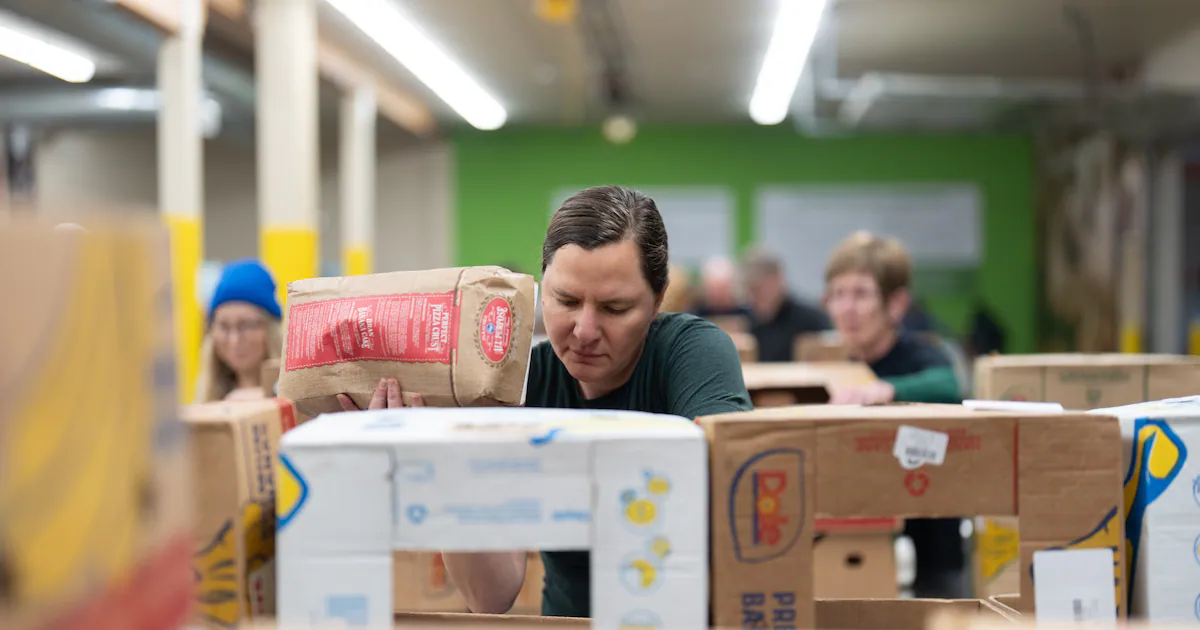Copyright Anchorage Daily News

Kassandra Pearson knew there was one thing she needed to do before her food-assistance payments stopped next month: She made a trip to her nearby food pantry to load up on nonperishable items. “I’m just trying to stock up with especially dry goods - rice and beans and things of that nature - to eat,” Pearson said Friday, adding that “the last few months I’ve been going, I’ve been getting extra canned goods.” Similar scenes may play out soon in food pantries across the nation if funding for the Supplemental Nutrition Assistance Program (SNAP), formerly known as food stamps, lapses Saturday as a result of the government shutdown. State agencies are warning that millions may lose their SNAP benefits. If Americans don’t receive their SNAP benefits, many are likely to turn to food pantries for help. It’s a surge that puts additional strain on the organizations, which are already struggling after federal funding cuts earlier this year, as well as increased need from furloughed federal workers and high food prices. About 42 million Americans relied on SNAP benefits to afford groceries in fiscal 2024, according to the Agriculture Department. And food advocates say many who receive SNAP benefits also visit food banks to supplement their meals. According to Feeding America, a national network of more than 200 food banks, more than 50 million Americans visited food banks and pantries in 2023. While food banks are traditionally financed through a combination of private donations, fundraising and federal dollars, this year, the Trump administration halted the Emergency Food Assistance Program and the Local Food Purchase Assistance program, which together provided food banks with about $1 billion annually. This has forced the organizations to lean more heavily on donations to keep up with demand. When Pearson, mother of a second-grader and a college freshman, stopped by the West Houston Area Ministries pantry on Oct. 21, she said, visitors peppered staff with questions about whether the change in SNAP benefits would bring restrictions on what they can collect from the pantry. She said visitors also shared information about other assistance options. “A lot of the clients that were in line were exchanging information like, ‘Hey, this is another food bank on this side of town,’ different places to go,” Pearson said. “So people are starting to try to find multiple resources where they can go find help.” In cities with large populations of federal workers - such as Washington, Atlanta, Houston and Boston - food banks also are racing to stock their pantries with extra supplies to support thousands of furloughed government employees who aren’t getting paid. Food banks in all four cities, as well as others, have expanded their distribution hours and opened additional temporary pantries to handle the demand. Radha Muthiah, CEO of the Capital Area Food Bank in the D.C. region, said there is growing anxiety among local residents on how to make ends meet amid federal layoffs, the shutdown and rising prices. Muthiah said that during the second week of the shutdown, the CAFB increased food distributions by about 10 to 15 percent. It opened new centers last week. Long lines have formed outside food pantries in D.C. as the shutdown nears the one-month mark. On the first day of operations at one of the CAFB’s new distribution centers, Muthiah said, people began lining up at 8 a.m. - even though the doors didn’t open until noon. “People tell us they can’t negotiate their rent or mortgage. They can’t negotiate a car payment. They have to pay their credit card bills,” she said. “So the line item that they feel they have the greatest flexibility around is food.” In Massachusetts - home to about 26,000 federal workers - the Greater Boston Food Bank received a record $50 million in donations this year, but Catherine D’Amato, the organization’s CEO, said that isn’t enough to meet demand. “Government shutdowns only exacerbate the problem of hunger,” she said. Food pantries are not designed to substitute larger programs meant to fight food insecurity, such as SNAP. As several food bank leaders noted in conversations with The Washington Post, one food bank meal is equal to approximately nine meals provided by SNAP. After USDA halted the two food bank funding programs, the nonprofit Houston Food Bank lost $25 million worth of food, CEO Brian Greene said, equivalent to 500 tractor-trailers of supplies. Greene said the organization adjusted to the cuts and is now focused on responding to the shutdown impact - the worst of which, he said, is yet to come. The food bank has set up extra distribution centers for federal workers and plans to open more if SNAP benefits are withheld in November. “We do the best with what we have,” Greene said. But the reality, he said, is that “we cannot meet the gap that will be created.” Caller data reviewed by researchers at the School of Public Health at Washington University in St. Louis found a spike in late October of calls to 211, a national hotline that connects Americans to social services, requesting support from food pantries. One of the food pantries the Houston Food Bank partners with is the West Houston Area Ministries pantry, which Pearson visits. While those who run the food banks say anxiety is rising about their ability to meet the growing demand in the coming weeks, Pearson said her experience at the pantry has not changed much. Shelves, she said, were well-stocked, and the food quality was as good as always. Still, she said, “people are trying to prepare.” “Usually, I go in there and if I have beans and things at home, I’m, like, ‘Oh, I don’t need that, I won’t take it,’” she said. “But this week, I took everything.” Pearson said she has learned not to take her pantry for granted, noting that even before the shutdown, high food prices meant federal benefits were not enough to feed her family. “It doesn’t last,” she said. “Being able to go to the food pantry helps us make it (through) the end of the month.”



